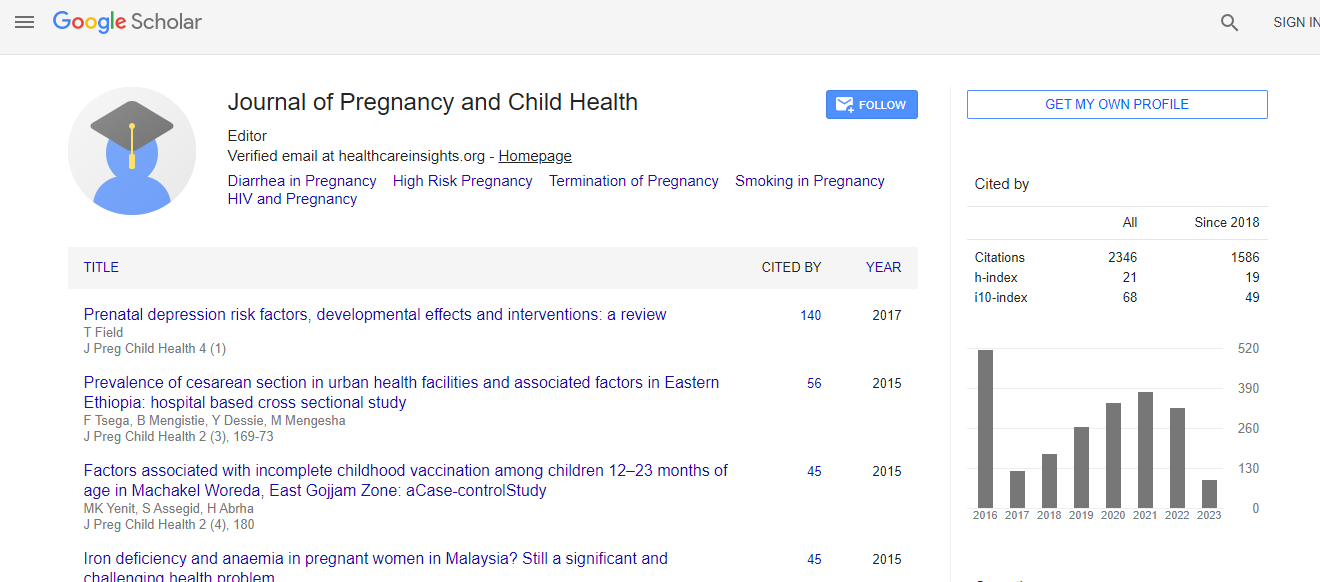Research Article
Maternal Variables as Potential Modifiable Risk Indicators of Preterm Labor in Jeddah, Saudi Arabia
| Khalid Hishmet Alabbasi , Estie Kruger* and Marc Tennent | |
| Department of Anatomy, Physiology and Human Biology, The University of Western Australia | |
| Corresponding Author : | Estie Kruger International Research Collaborative- Oral Health and Equity Anatomy, Physiology and Human Biology The University of Western Australia Nedlanda, Western Australia E-mail: estie.kruger@uwa.edu.au |
| Received: December 23, 2014; Accepted: May 21, 2015; Published: May 23, 2015 | |
| Citation: Alabbasi KH, Kruger E, Tennent M (2015) Maternal Variables as Potential Modifiable Risk Indicators of Preterm Labor in Jeddah, Saudi Arabia. J Preg Child Health 2:166. doi:10.4172/2376-127X.1000166 | |
| Copyright: © 2015 Alabbasi KH, et al. This is an open-access article distributed under the terms of the Creative Commons Attribution License, which permits unrestricted use, distribution, and reproduction in any medium, provided the original author and source are credited. | |
Abstract
Background: This study sought to estimate the prevalence of preterm births in Jeddah, (Western) Saudi Arabia with a view to understanding the extent of the public health problem, and to gain insight into the assessment of the most common maternal risk indicators associated with this condition in the Saudi Arabian population.
Methods: De-identified data preterm births over the period of six months were obtained from the medical records of Al-Azizyah Maternity and children Hospital in Jeddah, Kingdom of Saudi Arabia. Maternal demographics (age, Parity, follow up and pregnancy index) were included in the analysis. Gestational age, gender, birth weight, mode of delivery and outcome of each preterm baby were the other variables included.
Results: In this study, 899 births were reported during the study period of those 123 births were preterm. Late preterm births were the most common of the three gestational ages constituting 58.6% of the total number of preterm born within the study period. The prevalence of preterm birth among Saudi women in Jeddah city, Saudi Arabia, was 13.7%. Multi Gravidae women were twice more likely to give birth of preterm baby than their primi Gravitate counterparts. The most reported maternal risk indicators were anemia (34.1%), followed by Positive Urine infection (23.6%) and 2nd trimester VB (20.3%).
Results: This research identified the prevalence of preterm births of infants in Jeddah, Saudi Arabia over a six month period, and highlighted the risk indicators involved.

 Spanish
Spanish  Chinese
Chinese  Russian
Russian  German
German  French
French  Japanese
Japanese  Portuguese
Portuguese  Hindi
Hindi 
